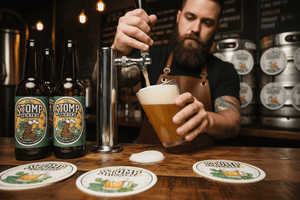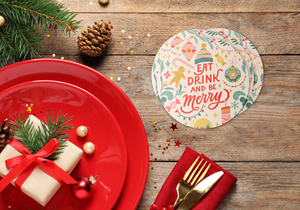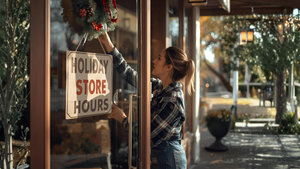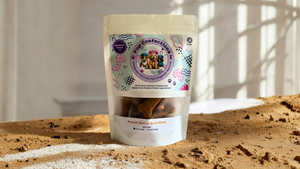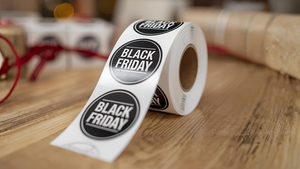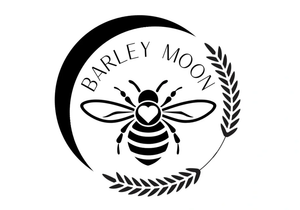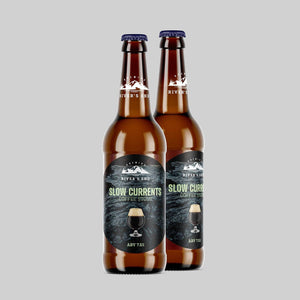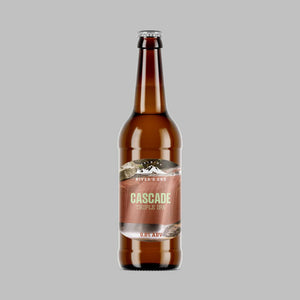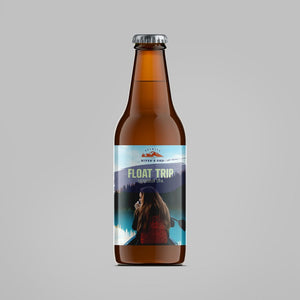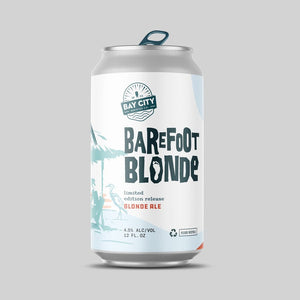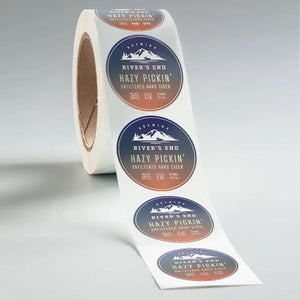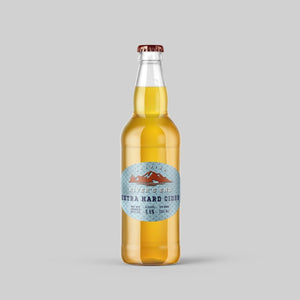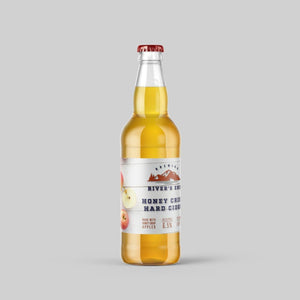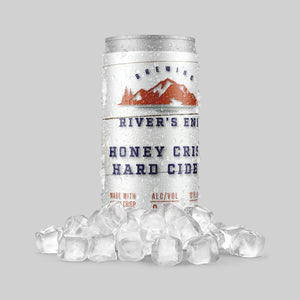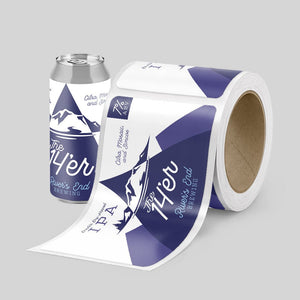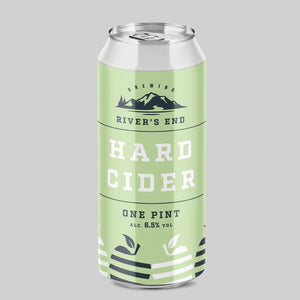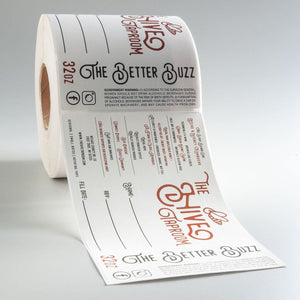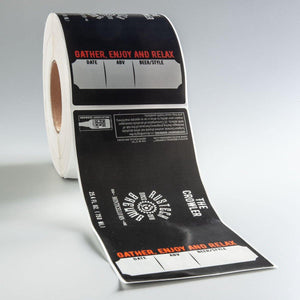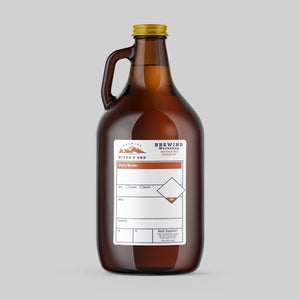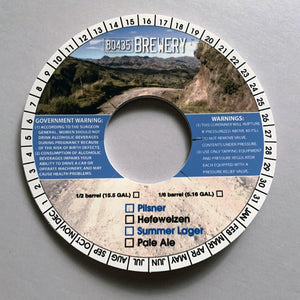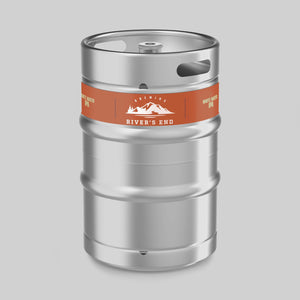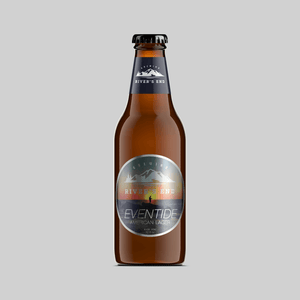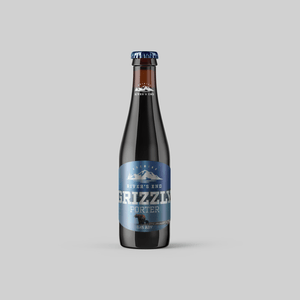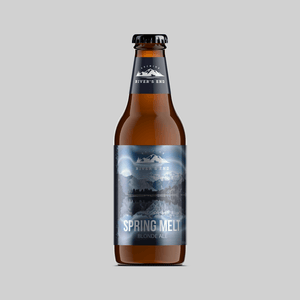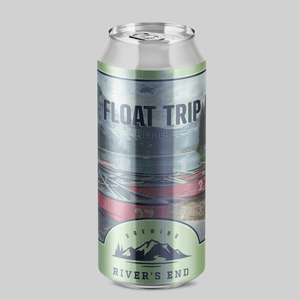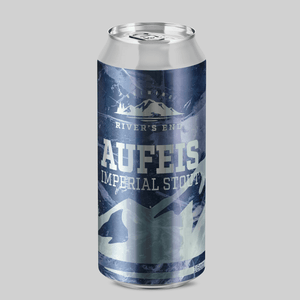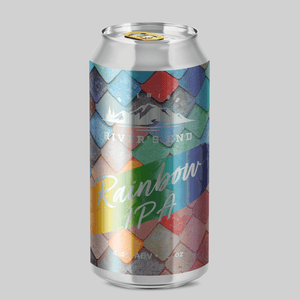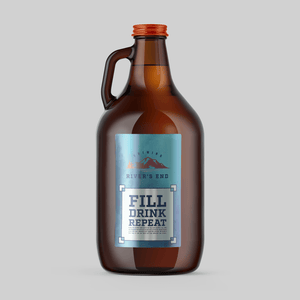How to Design a Beer Label: The Ultimate Guide

So you have a craft beer that is arguably the best in the market, but your branding falls short of this statement. Many consumers buy with their eyes and since beer is disguised within a can or bottle, having a dynamic beer label is key to getting your beers off the shelf.
Craft beer labels are in a constant shift as new trends emerge daily. In order to stay ahead of these trends and keep your craft beer label as fresh as possible, we’ve compiled the ultimate guide for craft brewers, highlighting the best practices, tips, and tricks of the trade.
Are you ready to get your products into the right beer lovers’ hands? Let’s dive in!
Why are Custom Craft Beer Labels Important?
The craft beer industry is booming with more than 10,000 craft breweries around the world, a large portion of which are in the United States. This is great for beer drinkers and beer makers alike. But it also presents a challenge: With all that competition, how do you make your beer catch some serious attention?
Enter the importance of custom craft beer labels.
Because a label does more than you might realize. Let’s take a closer look at why designing a custom craft beer label is crucial for your brand’s success.
Establishing Brand Identity
As store shelves become increasingly crowded with craft beers, standing out is obviously a top priority for every brewery. But you can’t just slap on some bright colors and use a loud font. You have to plan how to present your products carefully. The visual elements your company uses everywhere, from labels to advertisements, all have to work together to feed the larger story your company is telling – the brand story.
Think of colors, graphics, and other elements as the makeup you put on your products. The overall style of how you apply that makeup – bold and stage-ready, quieter and more subdued – says a lot about both your products and your brand.
Gaining a Competitive Advantage
The big commercial beer sellers (think the ones big enough to rent ad space during the Super Bowl) take up a lot of room in the beer market, leaving craft breweries also jockeying for space.
The art and craft of creating custom beer labels that are bold, creative, or unusual has become the focus for most of these craft breweries. And that makes sense. After all, customers can’t see, taste, or smell what’s in that bottle or can you’re trying to sell. Keeping up with marketing and labeling trends in the craft beer sphere is a must.
Targeting Your Ideal Audience
Colors, graphics, text, and font all work together to create a vibe around the beer inside your can or bottle, as well as around your brand. Consciously cultivating a particular feeling around who you are, what you do, and who you do it for is an important way to attract your ideal buyers. These are the people who look at your products and think, that’s right up my alley.
If you can use your beer labels to attract the attention of the right people, and do so consistently, you’ll be on your way to creating a loyal customer base.
What Should Your Beer Label Include?
Before you ever print a design and start sending your products out the door, you need to make sure you've done your homework. We're not just talking about researching your competitors here, either. Be sure your beer labels include all necessary information as required by the TTB, as well as:
- Name of the brewery
- Logo of the brand or brewery
- Name of the beer type and class
- Alcohol content level of the beer
- Net contents of the beer
- Featured image of the beer
- Unique typography specific to your beer brand
What Should You Consider Before Designing a Craft Beer Label?
Before you ever print a design and start sending your products out the door, you need to make sure you’ve done your homework. We’re not just talking about researching your competitors here, either.
Let’s face it: your label is the one chance you get to grab someone’s attention before they move on down the aisle. Dive deep into the considerations below to create truly stellar custom beer labels.
Discover Your Beer Brand Voice
You have your overall brand voice, and then there’s the voice you use on your beer labels. Ideally, these should have the same tone, personality, and sense of humor. So it’s important to consider the following questions that inform a brand voice to solidify your beer brand voice as well:
-
What makes your product unique? Noting the style of beer, be it IPA or stout, is an obvious must, but so is any other information that can set your product apart from the beer sitting beside it in the cooler. What kind of IPA, what style of brewing, how and where do you source your ingredients? Give your customers the answers they need to understand why they should buy your product and not the one next to it.
-
Is your product seasonal, or special in some other way? Beers made with seasonal ingredients are a “get it while it lasts” situation, and that’s something you need to reference on your beer label. Terms like “Special Edition” or “Limited Edition” can come in handy here. Likewise, if your beer was made using ancient or innovative techniques. Use everything about your beer that makes it special to help it stand out.
-
Who is your ideal customer? Demographics are a good place to start, but they’re not by any means the whole picture. Get a strong sense of your ideal customer’s personality: casual beer drinker or fanatic, attracted by aesthetics of a beer label or the information it provides? The better you know your target audience, the easier it becomes to speak directly to them.
-
Where do these customers buy your beer? Convenience store, beer distributor, online, or straight from the brewery? Where your customers go for your beer can make a difference in the way you speak to them through the label.
-
How do these customers buy your beer? Do they buy it by the bottle, in a six pack, or maybe in a case? Label considerations spill over into packaging design as well. Your package and individual labels, like your labels and your overall brand, need to work together to tell the same story, and create the same vibe.
Beer Can vs. Beer Bottle
Aesthetically, can vs. bottle comes down to a number of factors:
- Where do your customers drink your beer? Lighter, more summertime beers are often brought along to picnics or other outdoor events. In this case packaging your beer in a can, which is lighter and less fragile, makes more sense than a glass bottle.
- Where are you going to sell your beer? If you have plans to distribute your craft beer as widely as possible, shipping considerations will have to play into your packaging decisions. Cans are lighter and smaller and less prone to damage or breakage.
- What are your customers’ general preferences? Some people just prefer one over the other. These may be purely aesthetic choices, like bottles can feel fancier or more high end compared to cans. But choices are also motivated by environmental concern. Cans, after all, are more economical to ship, cutting down on their carbon footprint, and they’re easier to recycle.
- What are your own personal aesthetic preferences? Again, you may simply prefer to package (and consume) your product in a can or a bottle. There is no right or wrong answer, just the answer that works best for you.
There are also two factors that have more to do with logistics than aesthetics, and these center around protecting your beer from:
- Light: Exposure to sunlight is a death knell to your delicious brew. Brown glass offers the most protection for bottles, though you may be able to get away with clear or green glass if your beer is less hoppy, as these beers aren’t as easily damaged by sunlight. Cans, of course, offer complete UV blocking protection.
- Oxygen: Cans keep a beer fresher longer, by creating a completely airtight seal and preventing oxidation. If you plan to distribute your beer over long distances, this is an additional factor to keep in mind.
When it comes to beer, the packaging it comes in holds a lot of sway – can versus bottle continues to be a hot topic of debate within the craft beer industry. For that reason, it’s important to weigh your options carefully before taking the plunge.
Choose Your Beer Label Focus
Choosing the focus of your label is equal parts personal preference – what do you want a customer to see first? – and appealing to your ideal buyer. Everyone shops with their eyes as much as their taste buds, but some people are drawn more by art, while others look for a brand name. What do your customers prefer?
- Art-Forward: The art you create for your beer label says a lot about your brewery, your brand, and your products. And many breweries choose to make their art the focal point in part because over 70% of craft beer customers report that a cool design sways their buying decision.
- Name-Forward: A name or brewery-first label puts you front and center. If your customer base has become particularly brand loyal, or if you want to build recognition around your brewery, designing a beer label that centers who you are makes sense.
- Style-Forward: Many shoppers go to the store specifically because they’re in the mood for a bock or a stout. And many breweries choose to make beer style the central focus of a design in order to promote how unique, seasonal or otherwise special that particular style is.
How to Design a Craft Beer Label
Now that you’ve done your homework, it’s time to get down to the business of actually designing your label. Here are the key steps to creating a beer label that represents your brand, your product, and grabs a potential buyer’s attention:
1. Select Your Beer Label Colors

The best place to start with any design is the color scheme. Why? Because color sets the mood, with about 90% of shoppers making a value judgment based on colors alone.
If you’re packaging your beer in bottles, you’ll have the added challenge – or, let’s call it, the added opportunity – of coordinating your label with the color of your bottles as well. Challenging? Yes. But once you nail it, your custom craft beer labels are practically going to sing. Take a look at this Other Half Cheddar Broccoli unique beer label that showcases images of literally just that! Other Half produces a bunch of beers with food (mostly veggies) focused names – different, huh? The label design reflects the beer name (and also the brand), meanwhile, the hot pink background demands attention from shoppers.
2. Decide on the Shape and Size of Your Beer Label

There are standard sizes and shapes for beer labels, just as there are for bottles, cans, and packaging. There’s nothing wrong with using any one of them. In fact, veering too far away from the standard can work against you, if it’s too jarring a difference for regular beer buyers. Before you go too far outside the norm, consider sticking with standard sizes and focusing on creating a powerful label design instead.
3. Consider Label Potential Off The Can

Extend the lifespan of your label and expand your brand awareness potential with Drink 'N Peel™ labels. Don’t let the recycling bin be the end of your label’s journey, with die-cut stickers built-into your labels your customers can drink a tasty beer and collect a new sticker all in one purchase.
4. Pick Your Material and Number of Labels 
Labels aren’t just for the front of your products. Cans may have a single label that wraps all around the product, but there’s still a “back” and a “front” to be designed and integrated into the overall presentation. For bottles, there’s front, back, and sometimes the neck. Utilize the space available to you, but beware of overcrowding. Balance is the goal. Take a look at this Lupulin Brewing Fashion Mullet beer label and how they took advantage of the space to show off their cool artwork.
There are standard label papers, but take some time to explore metallic or transparent label materials as well. These can add a bit of unique polish to your design.
5. Design Custom Imagery

To be clear: You don’t have to incorporate pictures or other imagery into your beer labels. If your product and brand aesthetic is minimal, traditional, or modern, you can definitely let your colors and text do the work. DuClaw Brewing Regular Beer label did just that! This label showcases “Regular Beer'' in black fonts with a white background – it’s so straight to the point that it lets the beer do all the talking!
If you choose to add custom imagery to your beer label, however, begin to think of it as art, even fine art. Today’s craft beer labels often go all out with their imagery, not just to draw attention but also to appeal to their customers’ own sense of style and convey the character of the product as well.
That’s a lot of heavy lifting for your art to do. Many breweries hire a graphic designer or design agency to create their art for this very reason. If you go this route, make sure to hire folks with experience in the craft beer industry. They’re going to speak your language, and they’ll be able to guide you through the label art design process.
6. Get Creative with Wording

Puns, pop culture references, musical references – humor and plays on words are a great way to grab attention. This approach is popular among craft beer brewers and is enjoyed by craft beer drinkers. You can, of course, choose a more serious tone or minimalist approach, if that suits your brand. But even then, being creative with names, descriptions and other text is a great way to catch someone’s eye.
7. Create Custom Typography

Think of your font as your label’s tone of voice. Fonts play a large role in establishing the personality of your craft beer products, as well as your brand. Remember, brand voice and beer label voice need to speak in harmony with each other. So you might want to choose a few complimentary fonts to use throughout your branding and marketing visuals, from labels to websites to social media. Deep Ellum Play Date beer plasters their vibrant and bold fonts on the front and center of the label – showing off its free-spirited and unique character!
8. Include Legal Requirements

When it comes to design, most of what you put on your beer label is up to you. But you do need to adhere to the Alcohol and Tobacco Tax and Trade Bureau (TTB) labeling requirements. These are:
- Business name, address, and barcode
- Beer type
- Alcohol content
- Net content
- A legible, easy-to-read font
- Text size, again for readability
Be sure to read these requirements carefully, checking your design as you create the different elements. You don’t want to spend hours creating a beautiful beer label, just to realize at the end that you’ve failed to meet one or more legal requirements.
Craft Beer Label Design Inspiration
Need a little help getting your design ideas flowing? Here are 8 examples of awesome craft beer labels that will help generate some new design ideas and inspiration.
1. Aeronaut Brewing Company

2. Trillium Brewing

3. Castle Island Brewing

4. Zero Gravity Beer Hall

5. Zony Mash Beer Project

6. Burlington Beer Company

7. Foam Brewers

8. Miel Brewery

Craft Beer Label Design FAQs
What to Write on a Beer Label?
Your beer label must include the labeling requirements set by the Alcohol and Tobacco Tax and Trade Bureau (TTB).
- Business name, address, and barcode
- Beer type
- Alcohol content
- Net content
- A legible, easy-to-read font
- Text size, again for readability
What are the Measurements for a Beer Label?
Beer label size depends on the size and shape of the bottle or can. Stomp offers a variety of beer label sizes to fit your needs.
What Material is Best for Craft Beer Labels?
When it comes to material for your craft beer labels, there is no one right answer! Stomp offers custom beer labels printed on white matte BOPP and silver matte BOPP with either a white or clear liner. These materials are waterproof to protect your labels in any condition!
What is the Easiest Way to Make Beer Labels?
Order your beer labels from Stomp! We make the process simple with an easy to use art tool and instant proofs. You can focus on crafting the best brew, we have the labels handled!
More questions about craft beer labels? We’ve got you covered! Read more of our Beer Label FAQs.
Creating the Perfect Beer Label for Your Brewery
Standing out in a crowded craft beer market is a challenge. Draw attention to your craft beer products by creating custom beer labels that pop. Think of every beer label as a mini billboard declaring who you are, what you do, and who you do it for in a big, bold voice.
Let Stomp help you bring those big, bold beer label designs to life. Design custom labels in a variety of standard shapes and sizes, without putting stress on you or your bank account. Our variety of products just for breweries, easy-to-use design tool, and stellar customer support make it easier than ever to create custom craft beer labels that make your products outshine the competition. Have questions? Chat with our printing experts today to help get you started.
- Marketing Team

